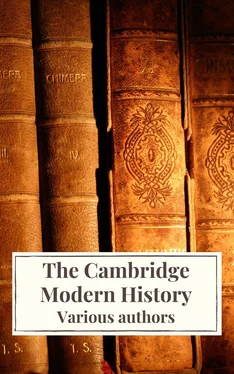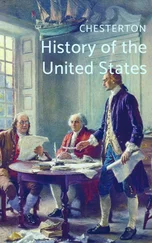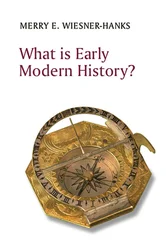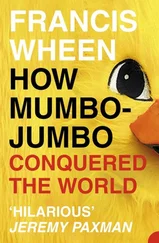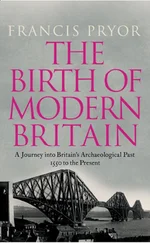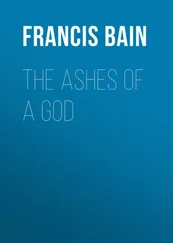R. Nisbet Bain - The Cambridge Modern History
Здесь есть возможность читать онлайн «R. Nisbet Bain - The Cambridge Modern History» — ознакомительный отрывок электронной книги совершенно бесплатно, а после прочтения отрывка купить полную версию. В некоторых случаях можно слушать аудио, скачать через торрент в формате fb2 и присутствует краткое содержание. Жанр: unrecognised, на английском языке. Описание произведения, (предисловие) а так же отзывы посетителей доступны на портале библиотеки ЛибКат.
- Название:The Cambridge Modern History
- Автор:
- Жанр:
- Год:неизвестен
- ISBN:нет данных
- Рейтинг книги:4 / 5. Голосов: 1
-
Избранное:Добавить в избранное
- Отзывы:
-
Ваша оценка:
- 80
- 1
- 2
- 3
- 4
- 5
The Cambridge Modern History: краткое содержание, описание и аннотация
Предлагаем к чтению аннотацию, описание, краткое содержание или предисловие (зависит от того, что написал сам автор книги «The Cambridge Modern History»). Если вы не нашли необходимую информацию о книге — напишите в комментариях, мы постараемся отыскать её.
The first series was planned by Lord Acton and edited by him with Stanley Leathes, Adolphus Ward and George Prothero.
The Cambridge Modern History Collection features all five original volumes:
Volume I: The Renaissance
Volume II: The Reformation, the End of the Middle Ages
Volume III The Wars of Religion
Volume IV: The 30 Years' War
Volume V: The Age of Louis XIV
The Cambridge Modern History — читать онлайн ознакомительный отрывок
Ниже представлен текст книги, разбитый по страницам. Система сохранения места последней прочитанной страницы, позволяет с удобством читать онлайн бесплатно книгу «The Cambridge Modern History», без необходимости каждый раз заново искать на чём Вы остановились. Поставьте закладку, и сможете в любой момент перейти на страницу, на которой закончили чтение.
Интервал:
Закладка:
Disorder and dilapidation enough were shown to justify Wolsey in taking out the Legatine commission in 1518, which later on was turned against the clergy, whom it did not amend, as bringing them into a praemunire. Wolsey could have reformed others, himself not at all,—or not until his dignities were stripped off and death stared him in the face. A magnificent pluralist ill-famed for his unclerical living, and a Cardinal who did not shrink from proposing to buy the papal tiara, he had always been the friend of learning since he completed Magdalen Tower at Oxford in his bursar’s days. With a revival of monastic discipline he intended to combine large schemes of study founded on the classics. Bishops as severe as Foxe of Winchester welcomed his clerical reform, which could not imply designs on the Catholic Faith. The nation did not repulse an English Legate. Various Benedictine houses put into Wolsey’s hands the election of their superiors. The Dominicans would not resist. But with the Observantines there was great difficulty. For his own Province of York Wolsey drew up a Constitution (1515 or 1518) which has been termed a model of ecclesiastical government; how far it was carried out we have scanty means of determining. His measures with regard to education are better known. In 1515 the University of Oxford surrendered to him all its powers. He proceeded to found seven lectureships, one of which was held by Ludovico Vives. He planned the “College of Secular Priests” for five hundred students, which was then styled Cardinal College and is now Christ Church. It was to be fed from a richly-endowed school at Ipswich, where only a gateway remains to tell of that splendid undertaking. Twenty-two small convents, with less than six inmates apiece, were suppressed and their revenues applied to defray these enterprises. It was remarked afterwards that Wolsey’s Legatine autocracy had paved the way for Henry’s assumption of the Supreme Headship; and that a precedent had been given in dissolving the small monasteries for the pillage and spoliation that speedily followed by Act of Parliament. On the other side, if reformation was necessary, Wolsey’s dealing can scarcely be judged inhumane; his hand would have been lighter than Thomas Cromwell’s; and while he protected the ancient creed he was lenient with such dissenters as fell under his jurisdiction.
In truth, it was not the Revival of Learning that shook Europe to its base, but the assault on a complicated and decaying system in which politics, finance and privileges, were blended with religion. Of the twelve Popes who sat in St Peter’s Chair between 1420 and 1520 not one was a man of transcendent faculty or deep insight. Martin V broke his solemn engagement to reform the Curia. Eugenius IV trifled with the Council of Basel and squandered a great opportunity. Cesarini warned him in vain that the German clergy were dissolute, the lay people scandalised; that the Holy See had fallen from its high estate. He pleaded for a serious amendment, if, “the entire shame were not to be cast on the Roman Curia, as the cause and author of all these evils.” When the anarchy of Basel drove him from it he did what in him lay at Florence (1439) to promote the short-lived union with the Greeks. And he perished in Hungary at the battle of Varna, still fighting on behalf of a united and reformed Christendom. Nicholas V, though intent chiefly on restoring literature, sent Cusanus with ample powers, as we have seen, into the North. But his own desire was that Rome should be a missionary of culture, when what the world needed was an economic and moral restoration. Pius II, whose character stands forth so individually in the long succession, had been a dissolute young man, but as a Pontiff he was grave and enthusiastic; his zeal for the Crusade denoted some far-off touch of greatness. He, too, spoke of reform. The learned Venetian, Domenichi, drew up a project which was to cure the ills of simony, to correct the vices of churchmen, and “other uncleanness and indecency.” Cusanus, on being consulted, took a wider range in his fourteen Articles; primitive discipline should be restored, and three visitors, clothed in dictatorial power, were to deal with the whole Church, beginning from the Pope and Curia. At least, he observed significantly, their state need not be worse than in the time of Martin V. Of all this nothing-whatever came.
Pius II began once more the bad old custom of nepotism. He advanced his kinsfolk to high positions in the Church, regardless of their age or attainments. But he distinguished some good men, as Calandrini, the Grand Penitentiary; the two Capranicas; Oliva, General of the Augustinians, known as the Angel of Peace; and the stern Carvajal, who survived as an example of austere virtue into the shameful years which tolerated Cardinals like Borgia and della Rovere. Judged by ethical standards, Italy exhibited during the whole of the fifteenth century a deeper decline than any other country in Europe. Private depravity and political debasement followed the most brilliant culture like a shadow; violence, craft, cruelty, were mingled with the administration of holy things. Yet the descent was broken, though not arrested, by religious revivals, especially in the north and centre, of which the credit is due to the Observantine Friars, the Austin Hermits, and the Benedictines. A catalogue of eighty Saints, men and women, chiefly in these communities, has been made out; it covers the period from 1400 to 1520. None are of the first rank; but Bernardino of Siena (1444) and Giovanni Capistrano (1456), Observantines, preached repentance with great if not lasting effect, to multitudes. Antoninus, Archbishop of Florence (1459), taught Christian doctrine successfully; denounced usury; and was a welcome peacemaker. Lorenzo Giustiniani, Patriarch of Venice (1456), abounded in good works. Frä Angelico da Fiesole, the Dominican (1455), perhaps the most purely religious painter that ever lived, was himself a vision of innocence and joy. Bernardino da Feltre (1494), by way of rescuing the poor from usurers, against whom he waged an incessant warfare, established in Rome the first Monte di Pietä, with the concurrence of Innocent VIII. The whole story of his benevolent campaigns is replete with interest. A series of preachers- the most famous were Franciscans-from Roberto da Lecce to Gabriele da Barletta, thundered against the vices of the age and its growing paganism. The Third Order of St Francis counted thousands of members, especially in the middle class, not so tainted as nobles or clergy. For, whatever may be said in defence of the priesthood elsewhere, in the Italian Peninsula it had lost its savour. Documentary evidence from almost every district and city leaves no doubt on this melancholy subject. The clergy were despised; so patent was their misconduct that proposals to abrogate the law of celibacy began to be put forward. Pius II may have entertained such a thought. But he contented himself with an endeavour to correct the religious Orders. The Observantines, who were strict, deserved and obtained his favour. But continual strife for precedence, which meant disciples and influence, raged between these and the Conventuals, nor could any Pope reconcile them. Santa Giustina, the Benedictine house at Padua (1412), became an Italian Bursfelde; its reform was accepted in Verona, Pavia, Milan; Pius II brought under it many monasteries which required better discipline. He deposed Auribelle, the unworthy General of the Dominicans. He took severe measures with the convents of Vallombrosa, the Humiliati in Venice, the Carmelites in Brescia, the Religious in Siena and Florence. Other Popes, Paul II, Sixtus IV, even Alexander VI did in like manner. Such efforts had been stimulated by earnest and cultivated men, of whom the most capable were Traversari, General of the Camaldulese (1386-1439), Baptista Mantuanus (1448-1516), and Aegidius of Viterbo, Augustinian and Cardinal, whose decrees in the synod of Santa Sabina afforded a scheme of reformation to the Fifth Lateran.
Читать дальшеИнтервал:
Закладка:
Похожие книги на «The Cambridge Modern History»
Представляем Вашему вниманию похожие книги на «The Cambridge Modern History» списком для выбора. Мы отобрали схожую по названию и смыслу литературу в надежде предоставить читателям больше вариантов отыскать новые, интересные, ещё непрочитанные произведения.
Обсуждение, отзывы о книге «The Cambridge Modern History» и просто собственные мнения читателей. Оставьте ваши комментарии, напишите, что Вы думаете о произведении, его смысле или главных героях. Укажите что конкретно понравилось, а что нет, и почему Вы так считаете.
